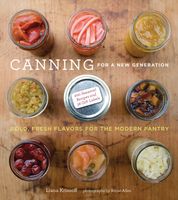Advertisement
A Few Words about Pectin
Appears in
Published 2010
Pectin is a natural substance found in the cell walls of fruits and vegetables in varying amounts. Pectin comes into play when making jams, preserves, and jellies because without sufficient pectin (and enough sugar and acid to react with it), the liquid won’t thicken and gel. This is fine if you don’t mind thin, syrupy preserves and liquid jellies, but if you want a nice, spreadable preserve, you’ll need to consider the pectin content of the fruit or fruits you’re using. Fruits with very high pectin content include green apples (used extensively in this book, in several ways), citrus, quince, cranberries, some blackberries, and some plums. Fruits that are underripe and a little hard have more pectin than ripe fruit; in most jams, preserves, and jellies, a combination of about a quarter underripe fruit (for the pectin) and three quarters ripe fruit (for flavor and natural sweetness) is ideal. Pectin is most concentrated in the cores and seeds, rinds and peels, and membranes of fruit, so wherever possible I find ways to use whole fruit. Sometimes that means including thin slices of lemon, or putting apple or citrus trimmings in a jelly bag or cheesecloth to cook with the fruit mixture to extract their precious pectin without actually including them in the preserve.

